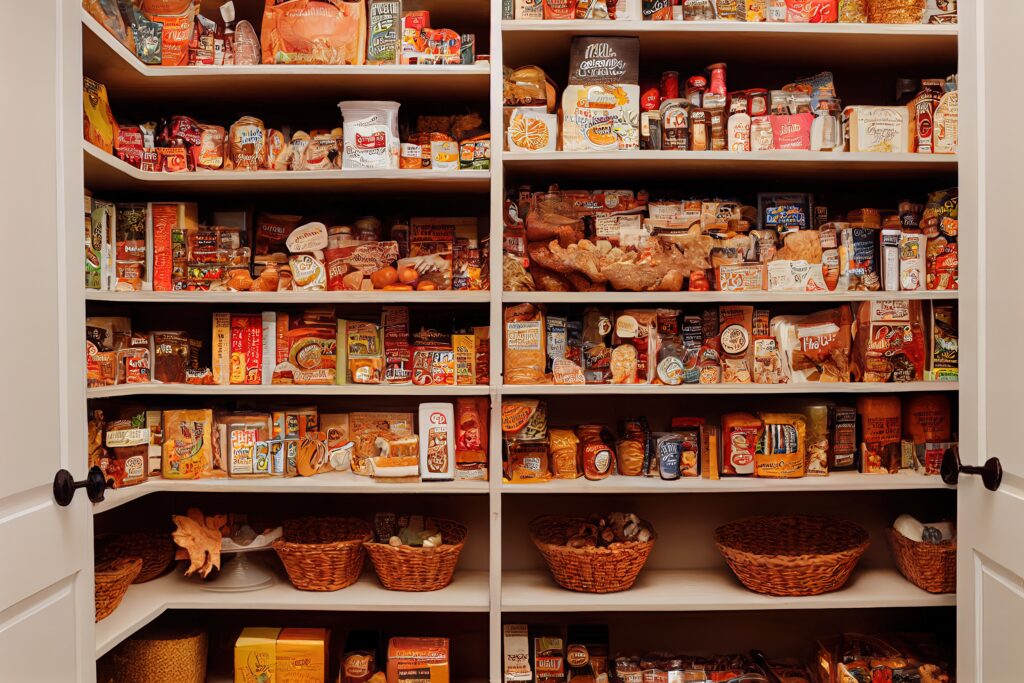Shelf-stable foods ensure the availability of high-quality, and great-tasting food. With increased food prices, stocking-up on these long-lasting healthy foods is good for your family and wallet. Food additives such as antioxidants and preservatives play a crucial role in making products shelf-stable by preventing or slowing down the spoilage and deterioration processes. Here is a list of the top ten, budget-friendly foods to keep in your kitchen:

- Canned or Dried Beans – Beans are high in fiber, full of plant protein, contain several vitamins and minerals, and come in a variety of shapes and sizes: red beans, black beans, white beans, etc. They can be paired with a starch, like rice or pasta, to make a quick and satisfying meal. Draining and rinsing canned beans will reduce the salt (sodium) content by 45-50%. They make for a convenient and shelf-stable product that can be stored at room temperature for an extended period of time. Dried beans are easy to prepare with water on the stove or in a crock pot.
- Plain Greek Yogurt – Greek yogurt contains as much as 17 grams of protein per serving, compared with around 9 grams in regular yogurt, and is a good source of calcium. Greek yogurt with probiotics can aid with gut health. It is a good snack or light meal that can be combined with fresh or canned fruit, nuts, or seeds.
- Fortified Cereals – Fortified cereals are a good source of many essential B vitamins and can also give you an added boost of fiber. Choose low sugar, high fiber varieties for the most nutritional value. Fortified cereals remain safe and nutritious for an extended period without the need for refrigeration as a result of the ingredients used, the manufacturing processes and the packaging techniques.
- Nut Butters – Nuts, seeds, and legumes (like peanut butter) provide a wealth of nutrients. In addition to the plant protein, fiber, carbohydrates, and good fats, these foods supply hard-to-get nutrients like iron, copper, magnesium, manganese, and zinc. Spread these butters on bread with jam or jelly for a quick, nutritious, and satisfying meal or snack.
- Canned or Pouched Tuna or Salmon – In addition to being high in protein and beneficial omega-3 fats, canned or pouched tuna and salmon are also good sources of vitamin D and great for heart health. If you are concerned about sodium, rinse the seafood before eating or buy a low sodium version. Avoid purchasing tuna or salmon packed in oil to lower the added fat.
- Bagged Salads – Easy and convenient, bagged salads are a great way to get your veggies with a lot less work. Combine it with your favorite dressing and throw in some protein like chicken, beans, or fish for a complete meal. If you want an even easier meal, try buying a complete salad meal kit, but use the salad dressing sparingly to keep calories low.
- Plant-Based Milks – Plant-based milks are a great option for people who can’t digest cow’s milk. Common examples include soy, almond, oat, coconut, cashew, and others. High in protein, potassium, and beneficial plant compounds, soy milk is a nutritional powerhouse. Be sure to purchase plant-based milk that has been fortified with vitamin D and other nutrients normally found in cow’s milk.
- Tofu – Like soy milk, tofu is an excellent source of plant protein and rich in vitamins, minerals, as well as healthy unsaturated fats. Firm tofu is great in stir-fries or grilled as a meat replacement, while soft tofu can be used in place of cheese in dishes like lasagna or scrambled like eggs.
- Tomato Sauce – Tomato sauce is most well-known for its high lycopene content. Lycopene is a good-for-you antioxidant, which gives tomato sauce its red color, and is thought to have numerous health benefits, including reducing the risk of heart disease and some cancers. There are different factors that help make tomato sauce shelf-stable such as the method of canning, tomato’s natural acidity, adjusting pH levels, and the packaging methods used to help maintain the integrity of the sauce. Tomato sauce is a favorite on pasta and used in a multitude of dishes. Be sure to purchase a lower sodium option, or make from scratch using herbs instead of added salt.
- Frozen Dinners – While not all frozen foods are created equally, there are many healthy options. Choose meals that are low in fat, low in added sugar and salt, are high in fiber, and loaded with vegetables. Frozen dinners are designed to be stored in the freezer to preserve their quality and safety, making them suitable for long-term storage. Keep them as a backup when time is short and nothing is planned.
